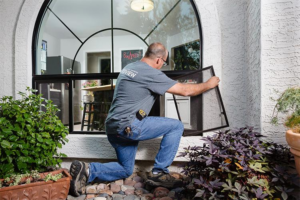A Timeless Classic. How to create a cottage-style garden in your own home!

Picture a white picket fence. Behind it, a white bird-bath sits amongst the gently swaying poppies. The purring of doves from the rafters distracts from the smell of freshly baked scones.
Don’t be fooled by what they said. The Neighbours are jealous. But rightly so. Your garden is a masterpiece.
Garden envy is real. But with a bit of work, anyone can create the ideal cottage garden. Here are some hot tips on how it’s done.
Cottage gardens are never too perfect
Cottage gardens are romantic. And romanticism is never straightforward or perfect. It’s often the beautiful imperfections that make our hearts open up. Think about ‘Love Actually’. We wouldn’t watch it if there wasn’t at least some heartbreak. It’s the same with your garden. This isn’t a licence to let things get out of hand. Instead, relish the imperfections of a winding brick pathway. Just forget about that one paver that isn’t level.
Pick the right plants (here’s 10 for you)
Seasonal flowers, vines, perennials, and edible plants – they’re all important in a cottage garden. The trick is to make it relevant: choose natives wherever possible. You will be rewarded. Here’s our pick of the top 10 cottage garden plants.
- Lavender – the must-have in any cottage garden. Bursting with colour and a perfect hit of fragrance, this perennial bush is a timeless classic.
- Roses – to complete the provincial feel, an assortment of roses is essential for any good cottage garden design.
- Geraldton Wax – keep it local and delicious. No one simply walks past one of these. With an alluring smell, you can’t go wrong with this Australian native.
- Purple Lea – this native grass has a beautiful purple tuft of a flower giving the garden some body and depth. Because these grasses clump together, it makes for a perfect filler plant.
- Honeysuckle – not only gives children sweet nectar on tap, but it also provides a romantic touch to wherever it’s planted. Grow it along fences or over archways for a stunning effect.
- Delphiniums – the life of the party. With a wide range of colours – you can’t have too many of these.
- Hardy Geraniums – a touch of simple elegance, these flowers range from deep purple to white and reward with a long flowering period.
- Thyme – grow herbs you can eat. Thyme is a great excuse to get out in the garden and harvest. It also provides a beautiful low-growing covering that will hide any amount of ugly brick or stone.
- Native Saltbush – the coastal-friendly ground cover. The blue-green leaves provide the perfect backdrop for some of your more vibrant choices.
- Pimelea ferruginea – also known as the ‘Rice Flower’ is a small, purple flowering shrub native to Western Australia. It’s known for attracting butterflies – the icing on the cake for the cottage garden.
Plant densely
A typical mistake when planting in the traditional cottage style is planting too sparsely. Getting your flowers close together and even mixing where appropriate is key. To achieve that provincial cottage style garden – you’ll want to create mounds of colour by playing with height and density.
Use walls and fences
Cover up any vertical surface with vines and creepers, go wild with arches and beams. The traditional garden wants to be almost out of control, but never actually going there. Don’t be perturbed if you finish planting and it still looks scarce or minimal. You can’t expect your wisteria to grow metres in length overnight. These things take time. In the meantime, check out how you can make your garden dreams possible: contact Garden Design Perth and start your project today.






